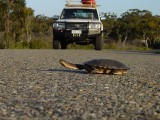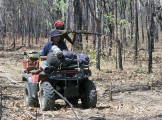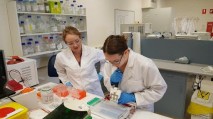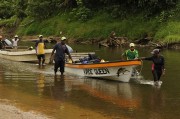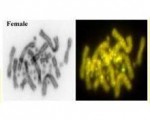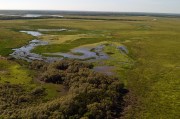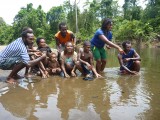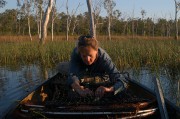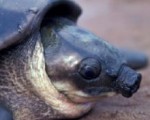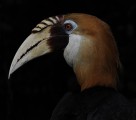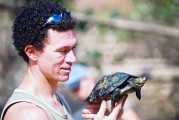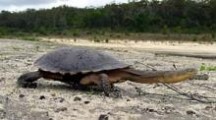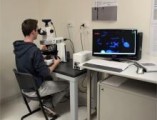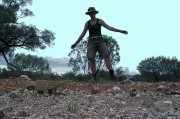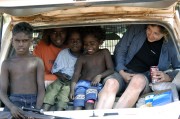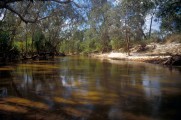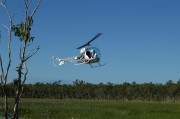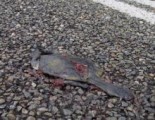 Great to see that the antibodies for a range of sex related protiens developed for mammals work in our model species, the dragon lizard. Our article, led by Sarah Whiteley and as a collaboration between the QIMR Berghofer Institute for Medical Research and the Institute for Applied Ecology, appeared today in the journal Biology of Reproduction.
Great to see that the antibodies for a range of sex related protiens developed for mammals work in our model species, the dragon lizard. Our article, led by Sarah Whiteley and as a collaboration between the QIMR Berghofer Institute for Medical Research and the Institute for Applied Ecology, appeared today in the journal Biology of Reproduction.
The mechanisms by which sex is determined, and how a sexual phenotype is stably maintained during adulthood, have been the focus of vigorous scientific inquiry. Resources common to the biomedical field (automated staining and imaging platforms) were leveraged to provide the first immunofluorescent data for a reptile species with temperature induced sex reversal.
Two four-plex immunofluorescent panels were explored across three sex classes (sex reversed ZZf females, normal ZWf females, and normal ZZm males). One panel was stained for chromatin remodeling genes JARID2 and KDM6B, and methylation marks H3K27me3, and H3K4me3 (Jumonji Panel). The other CaRe panel stained for environmental response genes CIRBP and RelA, and H3K27me3 and H3K4me3.
Our study characterized tissue specific expression and cellular localization patterns of these proteins and histone marks, providing new insights to the molecular characteristics of adult gonads in a dragon lizard Pogona vitticeps.
The confirmation that mammalian antibodies cross react in the dragon paves the way for some exciting new experiments that can take advantage of this new immunohistochemical resource.
By applying these techniques to the embryonic gonads, we hope to gain a new understanding of the role of these proteins during embryonic development, and most importantly for the dragon lizard, the molecular underpinnings of sex reversal.
Team Pogona goes high tech.
Read more about this here: Whiteley, S.L., McCuaig, R.D., Holleley, C.E., Rao, S. and Georges, A. 2021. Dynamics of epigenetic modifiers and environmentally sensitive proteins in a reptile with temperature induced sex reversal. Biology of Reproduction ioab217
Well done team.
